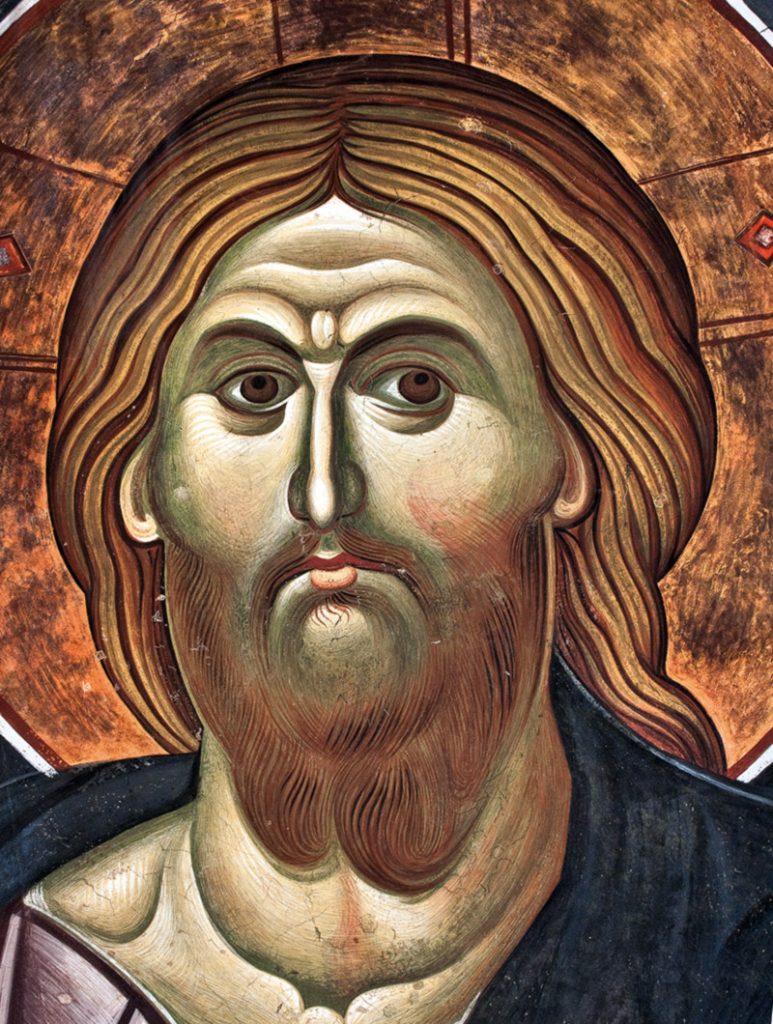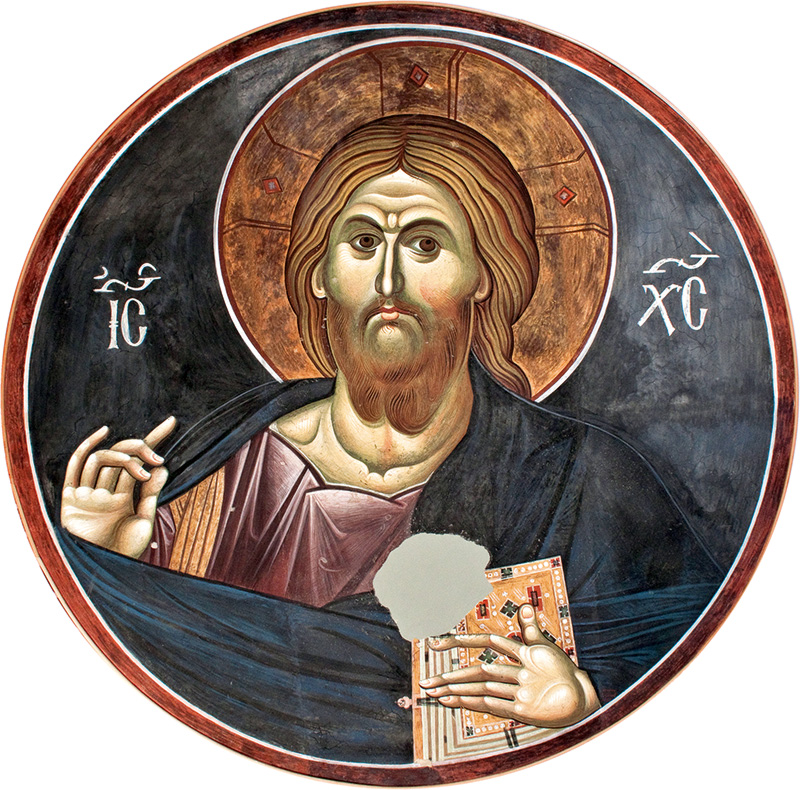The main dome of the Gračanica, 1318−1321

Gračanica’s uniqueness lies in the fact that the icon known as Pantocrator, which inspires liturgical awe, is depicted not just as the God-Man—i.e., God who assumed human nature—but as Co-Man, identifying Himself with man in his suffering and helplessness, with human pain through His suffering on the Cross and His humiliating death. Through His philanthropic gaze, the majestic Pantocrator lowers Himself and meets His creation. The eternal and infinite meets the finite in a particular place and time, within history, where they reconcile within the same fate. This composition, with its wrinkles in the forehead, was not repeated in other Byzantine churches, perhaps because its boldness brought it to the threshold of the psychologization of the divine drama. Gračanica’s Pantocrator is truly unique since it was not copied from anyone. It is original and loving, and for this reason, it constitutes a portrait of God, as Christ’s wonderfully loving eyes have revealed it to human beings. The riddle of human destiny finds its solution in the Pantocrator’s theandric gaze.
Stamatis Skliris


Leave a Comment
You must be <a href="https://poetics.holyicon.org/wp-login.php?redirect_to=https%3A%2F%2Fpoetics.holyicon.org%2Fchrist-pantocrator%2F">logged in</a> to post a comment.